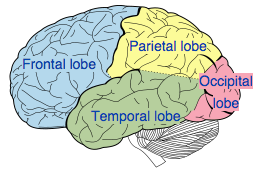Research is one of the hardest skills.
As an honours student who aspired to do PhD, I took up the Research Methods subject in 2008. It was one of the hardest subjects I have ever done. You are required to read 5 research papers every week, summarise it, then give a talk about one.
In the course of that subject, I was shown the limit of my shallow understanding. Each of the papers required a profound level of knowledge that can only be accumulated after months and years of interests and reading in the topic. I have never spent enough time on any subject to deepen my knowledge to that level. I have only touched the surface. However as life progressed, I have acquired many useful tips to study well, I would summarise them as below.
These are the main tips to learn / study and research: (unsurprisingly it is similar to software development process.)
- Know the scope: Like studying IELTS or TOEFL, or studying for exams, the most important thing is to establish the scope of what we need to learn.
- If it’s a subject at university, lets have a look at the lecture materials. Everything to be studied should be covered in the lecture & homework, and it’s limited. Knowing it’s scope / limit is profound, because facing an unknown enemy is very stressful.
- If it’s a standard test, like IELTS or TOEFL, knowing the format and what to expect in the exam is a must. Get a past paper, do a mock exam, get the grasp of what is the required that we know.
- Build the tree: The next thing after gathering requirements – is architecture. We need to the schema, the high-level sketch, the tree of knowledge.
- WHERE: As Elon Musk said “have the branches before the leaves”, most difficulties and time wasters in study is because we don’t know where this knowledge that we are reading right now is in a whole, don’t know where the street we are on is in the map, so we are lost. Put in on the tree, find it’s branch.
- WHY: Also understand the role of that knowledge, why we need it, what is this for…
- WHAT: Some knowledge that are difficult to learn because we don’t have the basics, we don’t understand the building blocks, we don’t know the stepping stones to reach that level. Identify these stepping stones, so we can learn them. Go back to the current state, check where we are at, how far it is from here to there, and do step by step. Be PATIENT, you will get there, don’t jump. — Most often, the problem is difficult because we don’t have any idea how to go from where we are at, it’s the time to use the map, look at the tree !!!
- Break down the task: Never eat an elephant at once, take one bite each. A big task has to be broken to pieces. A piano piece has to be broken to easy sentences.
- Be articulate, if the piano piece is broken into too large parts, we will just give up at the large parts. If the sentences are too small, it may become boring. Usually break it as small as possible, then slowly increase the size as long as it’s still comfortable to learn.
- Always have PATIENCE to go step by step, never rush. Getting impatient, wanting to go quicker, will just “Dục tốc bất đạt”. Like some piano pieces I tried to learn, PATIENCE is better than SPEED.





 K-complex là negative high-voltage peak, sau đó là 1 loạt Sleep spindle, hay còn gọi là sigma waves. K-complex và sleep spindle có tác dụng giúp trí nhớ lưu giữ những thông tin mới. Nó cũng bảo vệ cho giấc ngủ khỏi bị xáo động bởi những âm thanh lạ. Nó cũng có tác dụng trong điều chỉnh nhớ gì quên gì.
K-complex là negative high-voltage peak, sau đó là 1 loạt Sleep spindle, hay còn gọi là sigma waves. K-complex và sleep spindle có tác dụng giúp trí nhớ lưu giữ những thông tin mới. Nó cũng bảo vệ cho giấc ngủ khỏi bị xáo động bởi những âm thanh lạ. Nó cũng có tác dụng trong điều chỉnh nhớ gì quên gì.